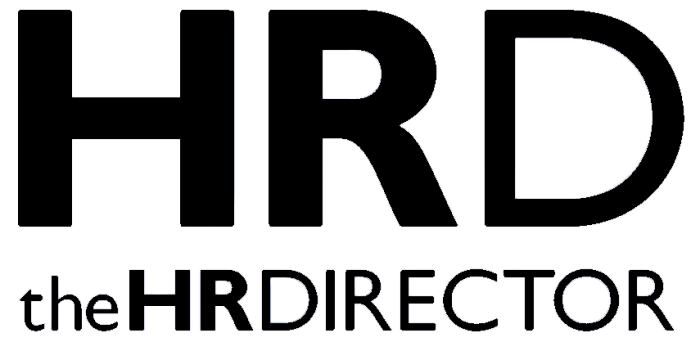In an age of office yoga, unlimited PTO, and ever-expanding perk lists, it’s easy to forget that what keeps people in a job isn’t what’s written on the benefits page – it’s how they feel at work. And no company can – or should – try to be the perfect fit for everyone.
“There are no bad employers or employees – just mismatches,” says Valentina. “What works brilliantly for one person might feel completely off for another.” The real challenge for companies, she believes, is to build a culture that’s honest, consistent, and aligned – so the right people can thrive in the right environment.
With over a decade of leadership experience in brand and marketing strategy, Valentina Bagniya has seen firsthand how internal culture can shape not just retention but resilience, creativity, and long-term culture that’s honest performance. For her, company’s values are not just decorative slogans, but a part of the daily work environment and internal culture.
Culture Over Strategy
For all the time companies spend perfecting business strategies, many overlook the single factor that can quietly determine whether those strategies succeed or fail: culture.
“Culture is not a ‘nice-to-have’ – it’s a fundamental enabler of performance. Without a strong culture, even the best strategy struggles to deliver. I often refer to the idea behind ‘Culture eats strategy for breakfast’ – and in practice, it holds true across industries and regions.
A well-defined culture sets expectations, builds trust, and accelerates alignment. It creates the psychological safety people need to contribute fully, challenge ideas, and take ownership,” says Valentina.
The impact of this clarity isn’t just theoretical – it directly affects retention. Employees who rate their organisation’s culture as ‘good’ or ‘excellent’ are nearly four times more likely to stay. Only 15% of them are actively seeking a new job, compared to 57% among those in poor cultural environments. In other words, culture isn’t a soft metric – it’s a powerful lever for stability and performance.
This alignment matters more than ever: according to Gallup’s 2024 global report, only 23% of employees are engaged at work – a record high, but still a stark reminder of how much work remains to connect strategy with people. Without that connection, even the most well-crafted business plans struggle to gain traction.
This is especially important in distributed or rapidly expanding teams. Without a shared mindset, communication slows, trust erodes, and decision-making becomes fragmented. With a well-defined culture, even new employees or remote teams can quickly understand how things are done, what’s expected, and how they can contribute from day one.
Making Values Actionable
Many companies have values – printed in handbooks, framed in offices, and listed on careers pages. But for Valentina Bagniya, values only matter if they actively shape how people work and interact every day.
“They are not abstract words on a wall, but a part of our daily work environment and internal culture,” says Valentina. “They are deeply embedded in our processes, guiding our day-to-day decisions and interactions.”
She emphasises that leaders play a critical role in this: through their example, they help translate abstract values into lived behaviours.
“For example, we hold regular one-on-one meetings, and ‘how you do your job’ is an essential part of these conversations. Also, we have an annual Personal Evaluation process as part of our company’s culture. These are not top-down reviews – they’re designed as open, two-way conversations. Employees are encouraged to discuss what truly matters to them: their goals, ideas, concerns, or challenges. This creates space for real alignment between personal development and company values – in a way that feels practical, not performative.
Beyond direct work with teams, we also use company-wide tools to reinforce our culture – like our internal recognition and reward platform, WIN STYLE. Employees can thank colleagues by sending internal currency linking that appreciation to one of our core values. This turns a simple ‘thank you’ into a moment of value-driven recognition, making our principles feel visible, shared, and part of every day life,” commented Valentina.
From Message to Reality: Aligning Employer Brand and Employee Experience
A strong employer brand can attract top talent – but if the internal reality doesn’t match the external image, people won’t stay. Valentina Bagniya sees this misalignment as one of the most common – and most costly – challenges in employer branding. “Many companies invest in building an attractive external image, but if that narrative doesn’t align with the internal experience, the result is predictable: disappointment, disengagement, and ultimately, attrition,” she says.
That disconnect doesn’t just erode internal trust – it can damage credibility in the market as well. At SOFTSWISS, one way the company addresses this challenge is by centralising ownership of the employer brand and EVP within the marketing function, rather than splitting it between HR, internal communications, and other departments. This structural choice helps to ensure strategic alignment across all channels — internal and external — and maintain one clear, consistent voice.
“That’s how EVP becomes more than a message – it becomes part of the culture employees live and candidates aspire to join.”
What Makes People Stay: The Human Factor
When all the buzzwords are stripped away – culture, values, engagement, experience – what ultimately keeps people in a company is something far more personal. According to Valentina Bagniya, people stay where they are trusted, supported, and empowered to grow – not just professionally, but as individuals.
According to a joint Gallup–Amazon survey, nearly 60% of employees say they are very interested in participating in upskilling programs – a clear signal that people aren’t just looking for a paycheck, but a place where they can grow.
It’s rarely the perks or policies that make people stay. Those might attract talent, but they don’t build long-term commitment. Culture does. It shapes how people experience their everyday work – how they’re treated, how they collaborate, and how they see their future in the company.
They say: “People don’t leave companies, they leave managers.” But Valentina Bagniya is sure that people leave cultures. “Because even the strongest leaders – and the most talented people –- can’t thrive in an environment that doesn’t support them. A weak or misaligned culture can quietly eat away not just at strategy, but at trust, performance, and potential.”
In the end, the companies that invest in culture not as a side project, but as a foundation, are the ones where people don’t just show up – they stay.







